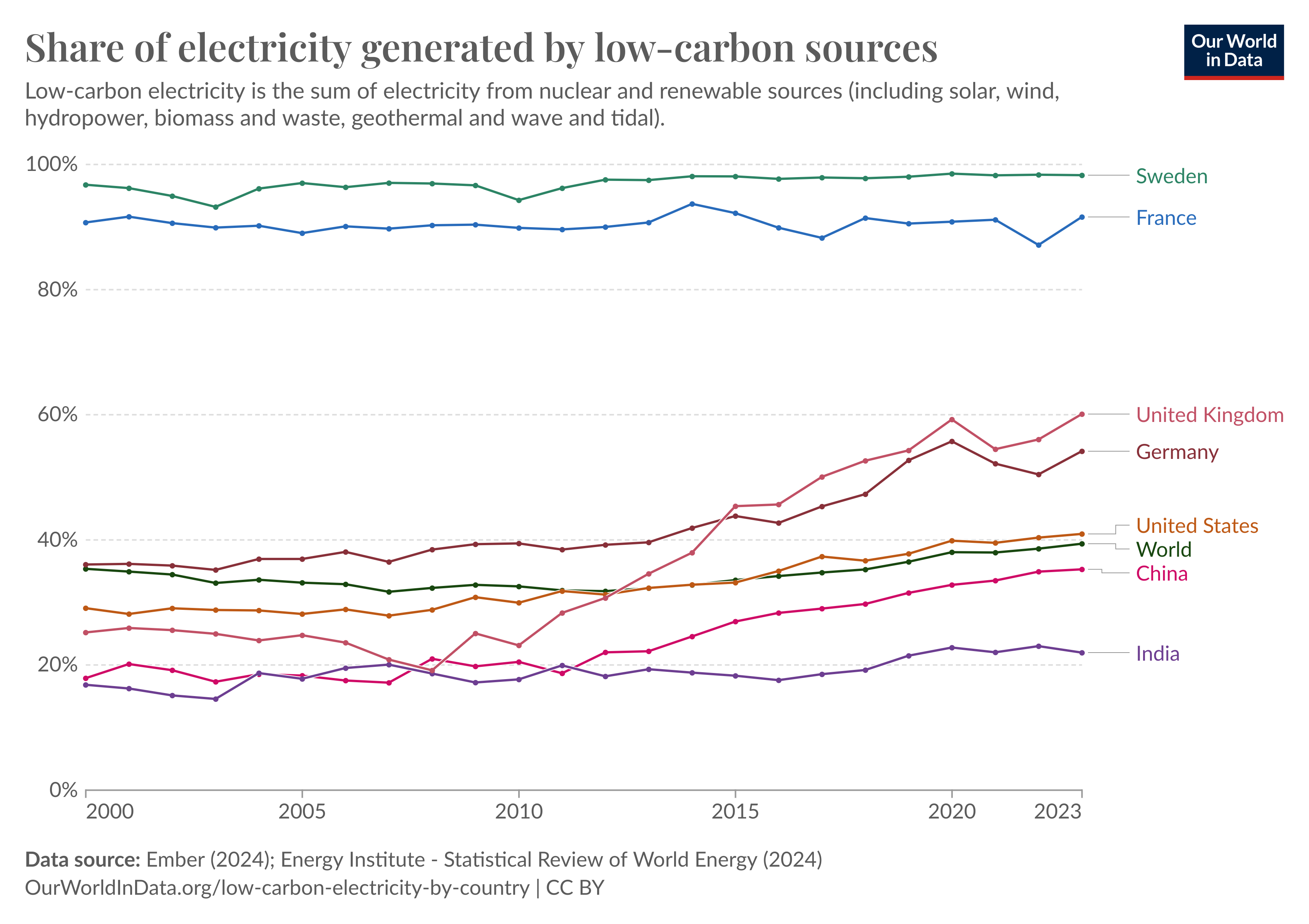In 2024, a small electric SUV with a range of 300 miles produces 52% fewer life cycle greenhouse gas (GHG) emissions than a comparable gasoline vehicle. Electric vehicles (EVs) have no tailpipe emissions, but nearly three quarters of the GHG emissions for a gasoline vehicle come from the tailpipe (vehicle operation). Although GHG emissions from the production and distribution of electricity is about double that of gasoline production and distribution (149 vs. 75 gCO2e/mile), that difference is more than offset by the tailpipe GHG emissions from the gasoline vehicle. Battery production adds an additional 30 gCO2e/mile over the life of the EV but is negligible for the gasoline vehicle. Increasing efficiencies for battery and vehicle production will lower GHG emissions in the future. Also, GHG emissions from electricity production are projected to be lower as the United States moves toward decarbonization of the grid.
Interesting that the difference is already that big, given that the US energy production is still depending a lot on fossile fuels (60%). And this factor is about to improve.

Car -sized internal combustion engines are wildly inefficient. Car-sized electric motors are wildly efficient.
Fuck yeah Sweden
The real big deal is that the emissions are localized to the area power generation, instead of the air around neighborhoods, parks and generally large groups of people. It’s much easier to trap emissions from one source compared to many millions of sources.



